The Puma is a German infantry fighting vehicle (Schützenpanzer or short SPz) designed to replace the aging Marder IFVs currently in service with the Bundeswehr. Replacement began in 2010 and is scheduled for completion by 2020. Mass production began on 6 July 2009.[4] The company responsible for the project is PSM Projekt System Management, a joint venture of Krauss-Maffei Wegmann and Rheinmetall Landsysteme. The Puma is one of the best-protected IFVs, while still having a high power-to-weight ratio. SAIC offered a derivative of the Puma as its contender in the American GCV Infantry Fighting Vehicle program.
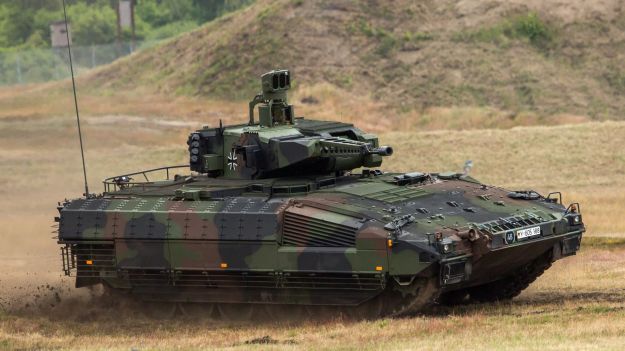
In 2002, the German Army (Heer) placed an order for the delivery of five pre-production vehicles and their logistics and training services at the end of 2004. On 8 November 2007, a budget of €3 billion to acquire 405 Pumas (excluding the five Pumas that had already been delivered to the German Army for trials) was agreed upon.
Delivery of 350 Pumas is expected to be completed by 2020 to replace the over-40-year-old Marder vehicles.

There are provisions for hard- or softkill systems to defeat hostile ATGMs or RPGs, or for future active/reactive armor. There are also mounts and interfaces for the inclusion of ATGMs on the right side of the turret.
Its large weight reserves and the compact cabin make it very attractive for modification. Most vital integrals are situated in the front, floor, and side walls which may remain unchanged during such a cabin-oriented modification.

Protection class A is the basic vehicle, at 31.5 metric tons combat-ready weight air transportable in the A400M. Protection class C consists of two large side panels that cover almost the whole flanks of the vehicle and act as skirts to the tracks, a near-complete turret cover and armor plates for most of the vehicle’s roof. The side panels are a mix of composite and spaced armor. It adds about 9 metric tons to the gross weight.
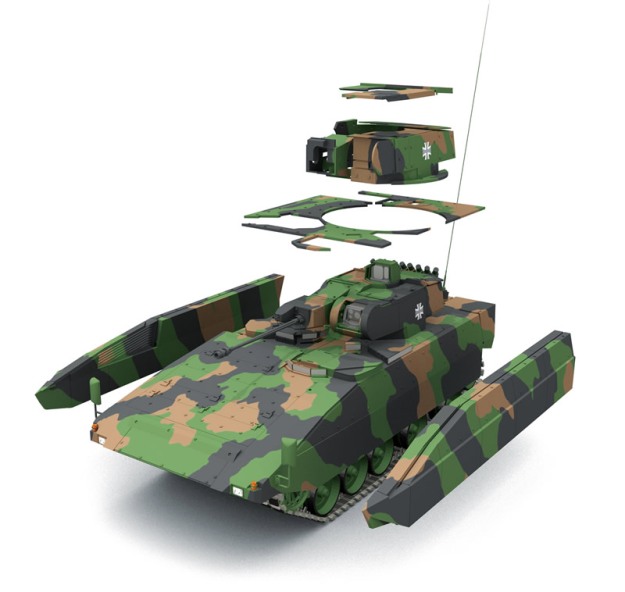 Protection class C
Protection class C
The basic armour can resist direct hits from 14.5 mm Russian rounds, the most powerful HMG cartridge in common use today (and up to twice as powerful as the western de facto standard .50 BMG cartridge). The frontal armour offers protection against medium caliber projectiles and shaped charge projectiles. In protection class C, the flanks of the Puma are up-armored to about the same level of protection as is the front, while the roof armor is able to withstand artillery or mortar bomblets.
The Pumas of the German Army will be equipped with a softkill system called Multifunktionales Selbstschutz-System (multifunction self protection system), MUSS, which is capable of defeating ATGMs.


 MUSS sensors
MUSS sensors
Source: Wiki
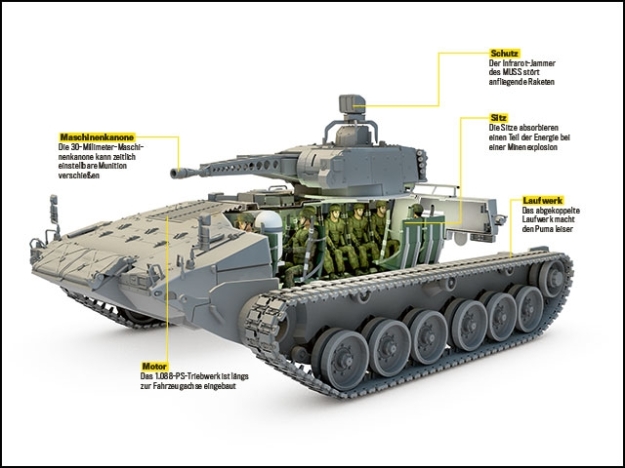 The chassis incorporates a key PUMA concept approach, the compact, full-length crew compartment for the entire crew, i.e. driver, gunner and commander as well as the infantry squad consisting of six soldiers
The chassis incorporates a key PUMA concept approach, the compact, full-length crew compartment for the entire crew, i.e. driver, gunner and commander as well as the infantry squad consisting of six soldiers
Some important technical solutions improve the PUMA’s combat effectiveness significantly:
- integration of the German Battlefield-Management-System «FüInfoSys»;
- integration of the German Future Soldier System «IdZ»;
- the MUltifunctional Self-protection System (MUSS), a softkill system against guided missiles, will be integrated. Integration of a launcher for two missiles for the Anti Armour/Multi-Purpose Missile System SPIKE LR (EuroSpike).
 In addition to existing 30 mm full-calibre and sub-calibre fin-stabilized ammunition, it is also possible to fire the newly developed air burst ammunition with time fuzes
In addition to existing 30 mm full-calibre and sub-calibre fin-stabilized ammunition, it is also possible to fire the newly developed air burst ammunition with time fuzes
Available interfaces for:
- identification friend-foe;
- alternative active protection systems;
- remote controlled grenade launcher.
The PUMA achieves this firepower through the interaction of different innovative elements:
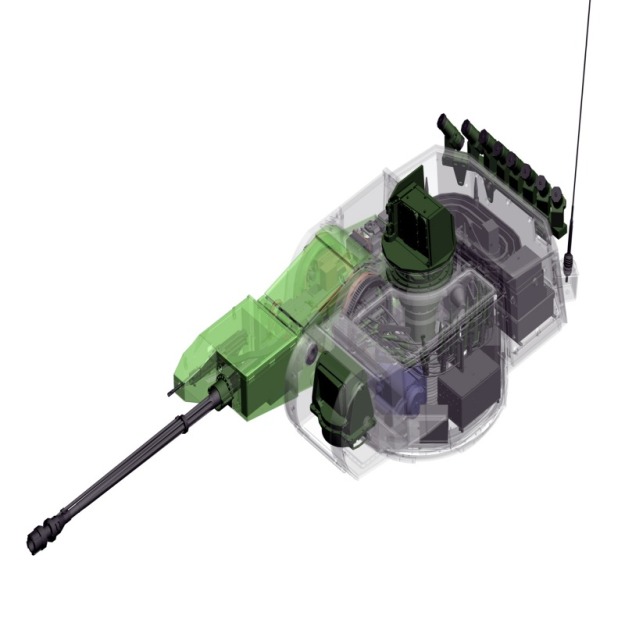
- The main armament is the fully stabilized, automatic 30-mm Mk-30-2 ABM fitted to the remote-controlled turret. This weapon designed for target engagement on great distances also on the move.
- 200 rounds of two types of ammunition are available ready to use. Further 200 rounds are stowed in the chassis.
- A variety of state of the art optical and optronic vision devices enables the whole crew 360° all-around surveillance, recognition and identification of targets on long distances.
 Source: From the net
Source: From the net
-
The hunter-killer functionality, as available in the Leopard 2 main battle tank, allows the rapid engagement of several targets within a very short time
-
PUMA receives an additional weapon system with the integration of the Anti Armour/Multi-Purpose Missile System SPIKE, provided by EuroSpike. The integration of SPIKE boosts the PUMA’s lethality significantly.
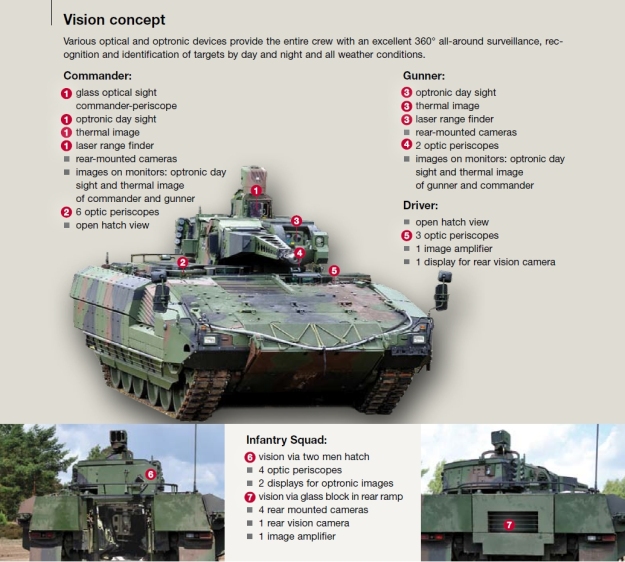
Targets identified through vision blocks can immediately be displayed to the commander for further identification by operating the target allocator
Performance Data
| Weight, level A (Air-transportable by A400M) |
31.45 t/69,335 lbs |
| Gross Vehicle Weight (GVW) |
43 t/94,799 lbs |
| Length |
7.6 m/24.9 feet |
| Width |
3.9 m/12.8 feet |
| Height |
3.6 m/11.8 feet |
| Ground clearance |
0.45 m/17.72 inch |
| Step climb |
0.8 m/2.62 feet |
| Gap crossing |
2.5 m/8.2 feet |
| Fording depth |
1.2 m/3.94 feet (without preparation) |
| Engine power |
800 kW/1,073 hp |
| Specific power-to-weight ratio |
up to 25 kW/t/33.5 hp/t |
| Maximum speed (road), forward |
43 mph/70 km/h |
| Maximum speed (road), reverse |
18 mph/30 km/h |
|
Crew
|
9 (6+3) |
| Chassis |
decoupled running gear |
| Turret |
unmanned, remote-controlled |
| Main armament |
Mk-30-2/ABM, cal. 30-mm |
| Main armament rounds |
200 (capacity ready bin) + 200 (stowed rounds) |
| Secondary armament |
MG 4, cal. 5.56-mm |
| Secondary armament rounds |
1000 (capacity ready bin) + 1000 (stowed rounds) |
| Guided missile system |
SPIKE LR (EuroSpike) |
 Powerful 10-cylinder engine delivering 800 kW at 4250 rpm
Powerful 10-cylinder engine delivering 800 kW at 4250 rpm
Source: dmitryshulgin.com
 Newly developed MK30-2/ABM 30mm automatic cannon and programmable ammunition, the PUMA IFV can effectively engage a wide spectrum of targets, even behind cover; and advanced optics, optronics and sensors give the crew maximum situational awareness around the clock, enabling early detection and high precision engagement of emerging threats.
Newly developed MK30-2/ABM 30mm automatic cannon and programmable ammunition, the PUMA IFV can effectively engage a wide spectrum of targets, even behind cover; and advanced optics, optronics and sensors give the crew maximum situational awareness around the clock, enabling early detection and high precision engagement of emerging threats.
WOTAN 30mm
AUTOMATIC CANNON from RHEINMETALL
Wotan is similar with the ATK Bushmaster series in the way that it is also electric driven. Rheinmetall’s previous 30mm cannon MK30-2 / ABM gun that is arming Germany’s newest IFV, Spz Puma is a gas operated gun. However the brand new Wotan is electrically driven following the success of the Bushmaster series with some new features.
 Wotan 30mm Auto-Cannon
Wotan 30mm Auto-Cannon
The gun is capable of engaging targets up to 3.000m. It has built-in Air Burst Munitions (ABM) capability thanks to its muzzle programmer which is a derivative of the successful AHEAD system.
Wotan has a fire rate of 200 shots per minute. The gun’s advanced features employed with the proven lethality and versatility of the 30x173mm ammunition offers a good alternative to Bushmaster series
 30x173mm ammunition offers a good alternative to Bushmaster series
30x173mm ammunition offers a good alternative to Bushmaster series

Source: warfaretech.blogspot.com
Secondary armament
 HK MG4 machine gun 5.56mm machine gun, developed by famous German company Heckler& Koch as a direct rival to the well-established FNMinimi / M249 SAW LMG.
HK MG4 machine gun 5.56mm machine gun, developed by famous German company Heckler& Koch as a direct rival to the well-established FNMinimi / M249 SAW LMG.
Source: world.guns.ru
Guided missile system

The Spike family includes: Spike-SR with a range of 800m, Spike-MR (Gill) with range of 2,500m, Spike-LR with 4,000m range and Spike-ER (formerly known as NTD Dandy) with a range of 8,000m. Spike-LR and Spike-ER can also be fitted on light combat vehicles and a package for mounting Spike-ER on helicopters is also available. The Spike missile system is currently in production and in service with the Israeli, Dutch, Chilean, Colombian, Finnish, German, Polish, Italian, Peruvian, Spanish and Singaporean armed forces.
The extended-range (8km) version, Spike-ER, also has a larger warhead. It is designed for mounting on light combat vehicles but can also be removed and fitted onto a tripod. The vehicle package includes the missile in its canister, a remotely controlled turret with target acquisition system and electronics and gunner’s station with multifunction display, control panel and handgrip.
A bi-directional fibre-optic datalink provides Spike-ER with a fire and steer mode, in addition to the other two modes. This means that the gunner does not need to lock-on to the target before launch, but can choose the target after launch and steer the missile to the target’s most vulnerable point or hand over to fire-and-forget.
Rafael has developed a version of Spike-ER with a penetration, blast and fragmentation (PBF) warhead which only explodes after penetration of the target (e.g. a wall), minimising collateral damage.
A Spike-ER launcher has been developed for helicopters. The four-round launcher requires no modifications to the helicopter, other than software integration. It can be fitted to a variety of helicopters, including AH-64 Apache (which can carry 16 missiles), AH-1S Cobra, A-129, MD-500, Mi-24 and others.
Data army-technology.com

HSWL 256 MTU V10 892 diesel

HSWL 256 MTU V10 892 diesel 800 kilowatts (1,100 hp) at 4,250 r/mi
 A full-scale mock-up of CMI Defence’s XC-8 two-person turret armed with a 105 mm CV 105 mm rifled gun installed on a standard production K21 NIFV hull. Source: CMI Defence
A full-scale mock-up of CMI Defence’s XC-8 two-person turret armed with a 105 mm CV 105 mm rifled gun installed on a standard production K21 NIFV hull. Source: CMI Defence A Doosan DST Korean Infantry Fighting Vehicle shown at ADEX 2015 in Seoul fitted with the CMI Defence Cockerill Protected Weapon Station armed with an Orbital ATK 30 mm M230LF cannon. (IHS/James Hardy)
A Doosan DST Korean Infantry Fighting Vehicle shown at ADEX 2015 in Seoul fitted with the CMI Defence Cockerill Protected Weapon Station armed with an Orbital ATK 30 mm M230LF cannon. (IHS/James Hardy) M230 30mm ChainGun
M230 30mm ChainGun M230LF with LinkFed from ammo cans (Source:from net)
M230LF with LinkFed from ammo cans (Source:from net)



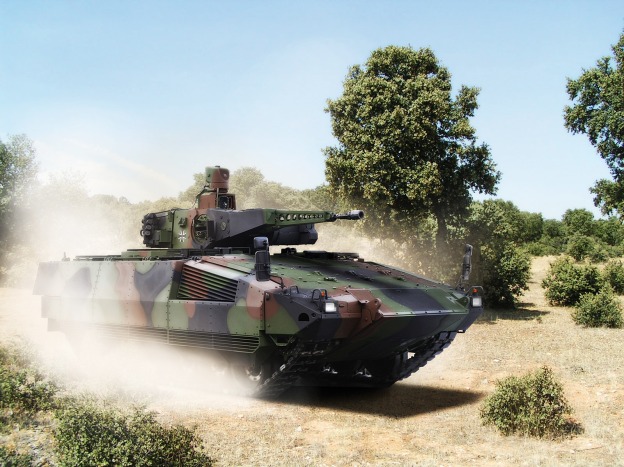



 Protection class C
Protection class C 

 MUSS sensors
MUSS sensors The chassis incorporates a key PUMA concept approach, the compact, full-length crew compartment for the entire crew, i.e. driver, gunner and commander as well as the infantry squad consisting of six soldiers
The chassis incorporates a key PUMA concept approach, the compact, full-length crew compartment for the entire crew, i.e. driver, gunner and commander as well as the infantry squad consisting of six soldiers In addition to existing 30 mm full-calibre and sub-calibre fin-stabilized ammunition, it is also possible to fire the newly developed air burst ammunition with time fuzes
In addition to existing 30 mm full-calibre and sub-calibre fin-stabilized ammunition, it is also possible to fire the newly developed air burst ammunition with time fuzes
 Source: From the net
Source: From the net
 Powerful 10-cylinder engine delivering 800 kW at 4250 rpm
Powerful 10-cylinder engine delivering 800 kW at 4250 rpm Newly developed MK30-2/ABM 30mm automatic cannon and programmable ammunition, the PUMA IFV can effectively engage a wide spectrum of targets, even behind cover; and advanced optics, optronics and sensors give the crew maximum situational awareness around the clock, enabling early detection and high precision engagement of emerging threats.
Newly developed MK30-2/ABM 30mm automatic cannon and programmable ammunition, the PUMA IFV can effectively engage a wide spectrum of targets, even behind cover; and advanced optics, optronics and sensors give the crew maximum situational awareness around the clock, enabling early detection and high precision engagement of emerging threats.  Wotan 30mm Auto-Cannon
Wotan 30mm Auto-Cannon 30x173mm ammunition offers a good alternative to Bushmaster series
30x173mm ammunition offers a good alternative to Bushmaster series

 HK MG4 machine gun 5.56mm machine gun, developed by famous German company Heckler& Koch as a direct rival to the well-established FNMinimi / M249 SAW LMG.
HK MG4 machine gun 5.56mm machine gun, developed by famous German company Heckler& Koch as a direct rival to the well-established FNMinimi / M249 SAW LMG.

